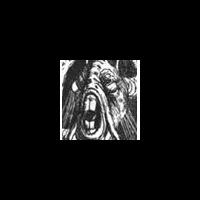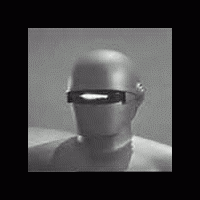
Thoughts: Two of Esperanto's Exceptions and Why They Are There??
FreeXenon :lta, 20. tammikuuta 2009
Viestejä: 32
Kieli: English
FreeXenon (Näytä profiilli) 20. tammikuuta 2009 16.14.33
Senlando (Näytä profiilli) 20. tammikuuta 2009 17.58.21
Also they way esperanto uses gender is a lot differant then the way Romance languages (or at least spanish, the only one i'm learning).
Esperanto nouns all use the same core word, which some argue to be masculine, i argue that they are in fact neutrol, and to make it feminine one just adds the "in" suffix. And a more modern change (or from what i know) is when you want the word to be clearly male, you add the "vir" prefix. also Esperanto only has one article (la) for all nouns, and it doesn't mater what sex the noun is.
While in spanish, it has La, Las, una, and unas (for feminine) and El, Los, un, and unos(for masculine).
From what I can see about esperanto, it is quite non gender specific when compared to Romance languages.
anyways that's just my two cents.

tommjames (Näytä profiilli) 20. tammikuuta 2009 17.59.06
FreeXenon (Näytä profiilli) 20. tammikuuta 2009 19.35.44
Doh!
As you can tell I am rather new to Esperanto. =O
melanija (Näytä profiilli) 20. tammikuuta 2009 19.49.41
As for j and ŭ, they don't change sounds, they form dipthongs. Dipthongs are what happen when you combine two sounds, such as 'a' and 'j'. If you say them both quickly they tend to glide into each other, rather than being two distinct sounds.
Oŝo-Jabe (Näytä profiilli) 20. tammikuuta 2009 23.35.49
As for gender specificity, gender may be somewhat uneven in Esperanto, but the only gendered words tend to fall into groups (family words, titles) that make it pretty easy to know the gender of a root.
erinja (Näytä profiilli) 21. tammikuuta 2009 21.24.07
I would definitely not consider ŭ and j to be exceptions; they are rather like consonant versions of u and i. "Ŭa" (like "wah" in English, one syllable) is markedly different from "ua" ("ooh-ah", two syllables). "Ja" (like 'ya' in English, one syllable) is markedly different from "ia" (ee-ah, two syllables)
Remember in elementary school, when you learn the difference between vowels and consonants, and you learn that "y" is sometimes a noun and sometimes a consonant? Well, in Esperanto, we have j instead of y, and it's always a consonant. It could never be used in a vowel sense, as y is used in English; "myst" can be pronounced in English, but "mjst" can't be pronounced in Esperanto.
Ŭ looks like a vowel, since it is based on u, but you should treat it as a consonant only, because its pronunciation is like w - a consonant. Some languages have a vowel w sound, but not English. A word like "twn" is not pronouncable in English. Similarly, "tŭn" is also not pronouncable in Esperanto.
Regarding genders - only a few words have a default gender, and they are very easy to learn. It's only family words (father, uncle, etc), plus some titles (king, duke, etc) and one or two others. It is not like the arbitrary genders of other languages; all of the gendered words refer to actual gendered beings, things that are physically male or female. And it's easy to learn, because the English translations of all of these words are gendered as well. A female king doesn't make much sense, right? So in this sense, Esperanto is gendered in much the same way that English is.
mnlg (Näytä profiilli) 21. tammikuuta 2009 23.32.53
erinja:Ŭ looks like a vowel, since it is based on u, but you should treat it as a consonant only, because its pronunciation is like w - a consonant. Some languages have a vowel w sound, but not English. A word like "twn" is not pronouncable in English.There are a few (albeit quite obscure) English words having the letter w playing the role of a full-fledged vowel, like cwm and crwth (both Welsh imports). Yet another example of how the richness of English lexicon in essence looks very much like an unsorted heap of words clumped together from many languages with only a hint of harmonization here and there... but I digress.
The letter "ŭ" in esperanto is a semivowel (or semiconsonant), which is a vocalic sound used in a consonant role. A semivowel written after or before a vowel usually (but not always) forms a diphthong, just like "ow" in the english "cow".
Also "j" is a semivowel. It begs the question of why it is written as j and not as ĭ, as logic would dictate, but I guess the answer rests with Zamenhof now!
As a final note, it's not exactly correct to say that "y" is sometimes a vowel and sometimes a consonant; what should be said is that the symbol "y" in English can represent both sounds, (vocalic) and [j] (semi-vocalic), depending on the word, just like the symbol "a" can represent either [æ], [ə], [ɑ], etc. But I can see why this explanation is not preferred in elementary school

ceigered (Näytä profiilli) 22. tammikuuta 2009 4.51.41
Even then I wouldn't call the English spelling system irregular.... Just there are way too many rules and nuances for the average human to learn

RiotNrrd (Näytä profiilli) 22. tammikuuta 2009 7.23.26
ceigered:Although I am yet to see 'ux' before a vowel"Dum la antaŭa jaro, usonanoj elektis al Obama."
There ya go!









